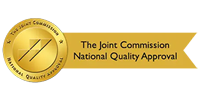Many people describe mindfulness as a form of meditation, however Positive Psychology explains that “mindfulness is a quality; mediation is a practice…mindfulness describes a specific way of living that can be cultivated through practice.”
Meditation is the process by which a person can intimately learn the interworking of his or her own mind. Mindfulness, as defined by the Oxford English Dictionary, is “a mental state achieved by focusing one’s awareness on the present moment, while calmly acknowledging and accepting one’s feelings, thoughts, and bodily sensations.”
The purpose of practicing mindfulness techniques is to help increase one’s ability to regulate emotions, while simultaneously waning unwanted feelings. Although mindfulness may seem like a mature concept, there are countless fun and engaging activities for kids that can encourage mindfulness, such as:
- Practice intentional breathing together: Focusing on your breath can help you and your child find respite from feelings of overwhelm, while simultaneously unwinding, and resetting. There are many simple breathing exercise that can help get you started.
- Focus on the five senses: An effective grounding technique and a quick way to bring one’s attention to the present moment is to actively engage all five senses. Try this by naming 5 things you can see, 4 things you can feel, 3 things you can hear, 2 things you can smell, and 1 thing you can taste.
- Create a sensory surprise bag: Encourage your child to explore through touch by collecting different items with varying textures and placing them in a bag. Ask questions to prompt mindfulness such as: Is it sharp or smooth? Big or small? Can you describe what you are feeling?
- Explore nature: Go for a walk and notice your surroundings; try playing a game of “I Spy.” Encourage your child to focus on how the outside world sounds and smells, as well as on how his or her body feels outdoors, help them notice the movements of their legs, and areas of their body needed to continue the walk, draw attention to the lifting and falling of their feet, to the pace of their stride…etc.
- Blow bubbles: Focusing on blowing bubbles can help get kids out of their heads. Have them see how big they can make their bubbles by breathing in slowly and then relax as they exhale into the bubble wand.
- Facilitate a full body scan: This activity involves your child sitting or standing still and closing their eyes. Then, starting with the tip of their head, ask them to pay attention to any sensations they are experiencing. If their head feels normal, move on, and ask them to draw their attention to their face, neck, shoulders, arms, chest, hands, etc. and all the way down to their toes. Studies show that even short periods of this kind of meditation can help children become more resilient and better able to cope with big feelings when they arise.
The purpose of practicing mindfulness techniques is to promote relaxation, help increase a child’s ability to regulate emotions, enhance focus, become resilient towards unwanted feelings, and enrich a child’s overall quality of life.
Further Information and Support
For most of us, life can be very stressful, leading us to feel emotionally charged, which can cause anxiety, panic attacks, depression, and getting stuck in a cycle of being burdened with negative thoughts. Navigating through the challenges and emotional turmoil of life can be overwhelming, but you do not have to go through it alone. Engage Treatment is a Joint Commission Accredited professional psychological practice. We specialize in treating children, teens, and young adults struggling with depression and anxiety through community-focused treatment plans that incorporate a carefully selected combination of therapeutic interventions. Our compassionate, multidisciplinary practitioners are devoted to providing the highest quality of care that helps ignite positive change and enables clients to reach optimal health and well-being. Please do not hesitate to reach out for guidance. We are happy to answer questions and provide you with any additional information. Feel free to call us at 805-497-0605 or email us at [email protected]. You are also welcomed to get in touch by filling out our contact form. We look forward to connecting and having the opportunity to discuss how we might best be able to support you.
Contact Us
Westlake Campus:
IOP Program
2625 Townsgate Road, Suite 210
Westlake Village, California 91361
Agoura Campus:
Private Therapy & Parenting Program
30300 Agoura Road, Suite 250
Agoura Hills, CA 91301
805-497-0605
805-371-4862











© 2023 Engage Treatment Program, Inc. All Rights Reserved.
LGBTQ Friendly
About
• About Engage
• Our Team
• Career Opportunities
• Individual / Family Therapy






